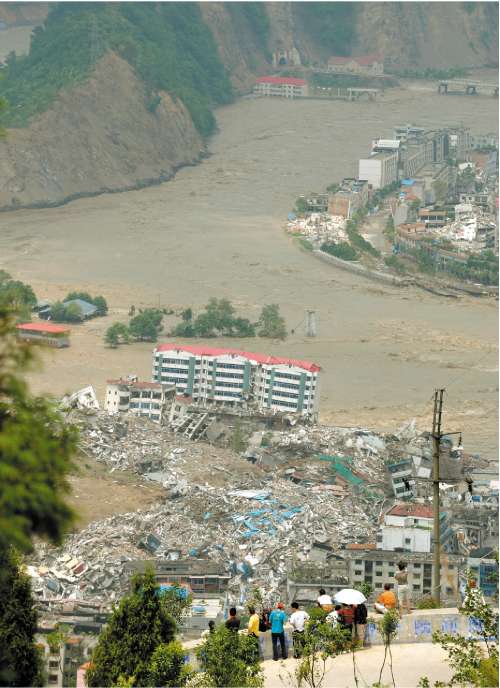Goodbye Beichuan: lake created by quake destroys Chinese town

Your support helps us to tell the story
From reproductive rights to climate change to Big Tech, The Independent is on the ground when the story is developing. Whether it's investigating the financials of Elon Musk's pro-Trump PAC or producing our latest documentary, 'The A Word', which shines a light on the American women fighting for reproductive rights, we know how important it is to parse out the facts from the messaging.
At such a critical moment in US history, we need reporters on the ground. Your donation allows us to keep sending journalists to speak to both sides of the story.
The Independent is trusted by Americans across the entire political spectrum. And unlike many other quality news outlets, we choose not to lock Americans out of our reporting and analysis with paywalls. We believe quality journalism should be available to everyone, paid for by those who can afford it.
Your support makes all the difference.Earthquake-battered Beichuan suffered its final indignity yesterday as torrents of muddy water bore down on the ruins of the town. The living have left, but the gushing waters took with them the corpses buried in the rubble; the life savings of the residents who were forced to leave; and official documents, books, letters and photographs that make up a person's memories.
Local residents stood on the higher ground and watched as the water washed away a town's history. So devastated is Beichuan that it will not be rebuilt in its current location. A reconstructed town will be located 20 miles to the south-west where it is less at risk from quakes.
But yesterday's man-made deluge was a necessary evil. Chinese engineers had been trying for days to drain water from the brimming Tangjiashan quake lake to relieve the risk of flooding.
Although the danger has subsided somewhat, people downriver are taking no chances, and are ready for possible flooding. Mianyang, where many of the homeless have taken shelter, is on full alert and the citizens of tent cities have been practising evacuation drills. Many homes in the town of Qingyi are at risk.
It's been quite a job getting this natural phenomenon under control. For days, troops have been exploding dynamite and launching anti-tank missiles to try to blast debris to divert water away from the lake. Water engineering is in the bones around here. The Dujiangyan water irrigation system is among the world's earliest examples of water management, built over 2,200 years ago.
And they take no chances when it comes to quake lakes. Previous quake lakes burst their banks weeks after two powerful earthquakes hit the same area in 1786 and 1933, killing several times more people than those who died directly from the tremors.
Water behind the Tangjiashan lake's natural mud-and-rock dam rose to 739.5m (2,440ft) above sea level. A quarter of a million of the 1.3 million people living downstream from the towns of Beichuan, Mianyang and Jiangyou had been moved to higher ground in case of a massive breach.
The death toll from the Sichuan earthquake now stands at 69,000, with 17,551 people still missing, thousands injured, and millions left homeless. The Communist Party has scored high among ordinary people for its swiftness in dealing with the quake but recriminations are starting at an official level. State media reported that at least 15 Sichuan officials had been removed from their posts for mishandling relief work, while another 13 were given other forms of administrative punishment.
There were poignant scenes at the world's most famous panda reserve at Wolong yesterday, where staff buried Mao Mao, the only panda from the reserve confirmed killed by the quake. The body of nine-year-old Mao Mao, the mother of five, was found on Monday. The pandas are being moved to a safer site.
Join our commenting forum
Join thought-provoking conversations, follow other Independent readers and see their replies
Comments